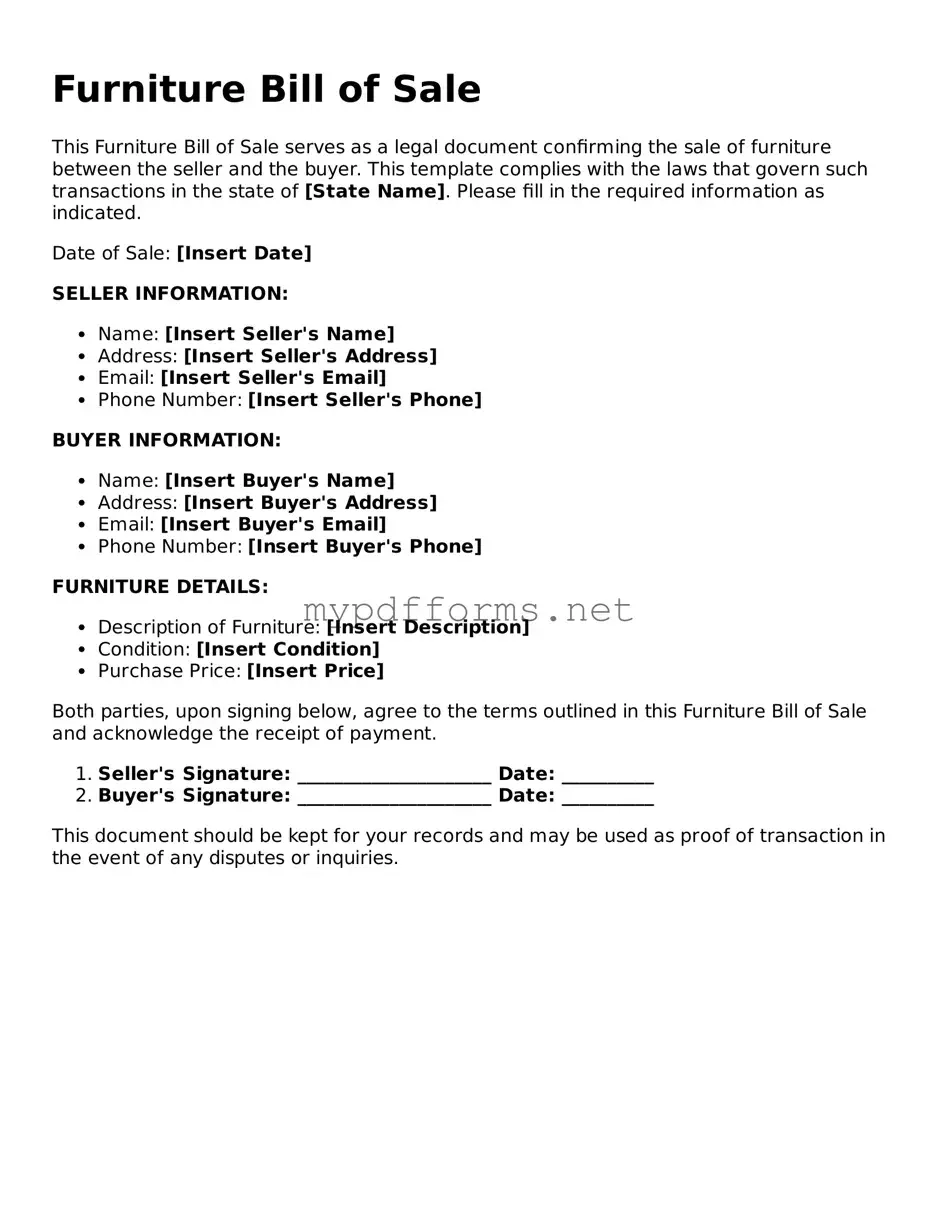Furniture Bill of Sale Template
A Furniture Bill of Sale form is a legal document that records the sale of furniture between a buyer and a seller. This form serves as proof of the transaction, detailing the items sold, their condition, and the agreed-upon price. To ensure a smooth and transparent exchange, it is essential to fill out this form accurately.
Ready to complete your transaction? Fill out the form by clicking the button below.
Modify Document Here
